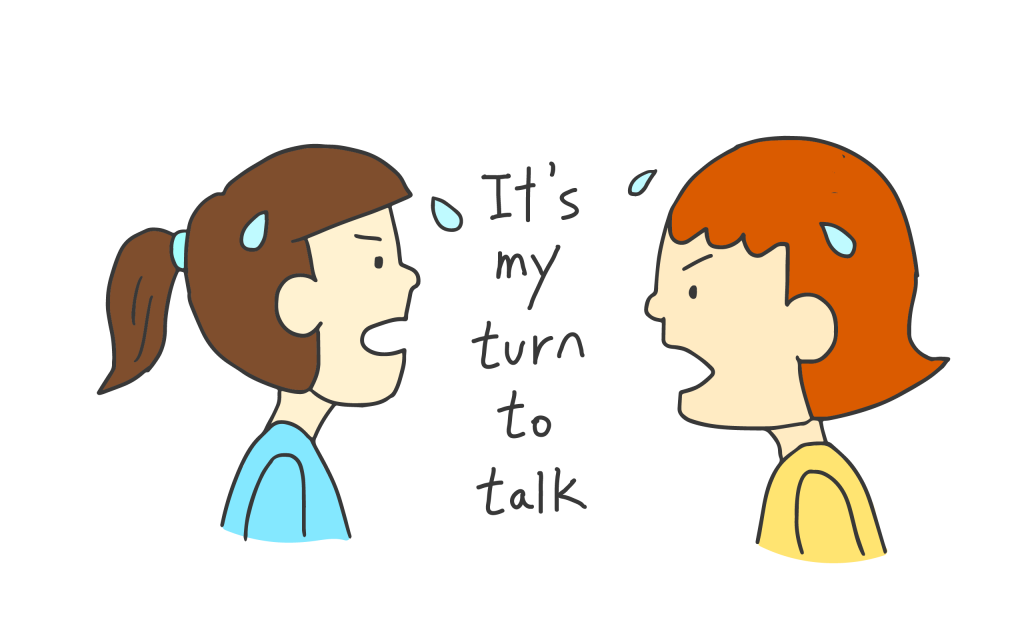 Feedback is a hot topic, but not everyone agrees about its usefulness. Some praise feedback as something fundamentally important, while others claim that, even with a well-intentioned feedback model, it’s directly harmful to relationships and self-esteem.
Feedback is a hot topic, but not everyone agrees about its usefulness. Some praise feedback as something fundamentally important, while others claim that, even with a well-intentioned feedback model, it’s directly harmful to relationships and self-esteem.
I’ve spent many years learning about and observing feedback. I’ve seen how feedback can both unify us and divide us. I’ve also come to learn what distinguishes great feedback from mediocre or even harmful feedback. Over the years, I’ve distilled my observations and research into a feedback model, and in this post, I share that model. I call it “The EPIQ Feedback Model”.
So join me and explore how Empathy, Position, Intention, and Quality can be used to craft and deliver great feedback.
The EPIQ Feedback Model
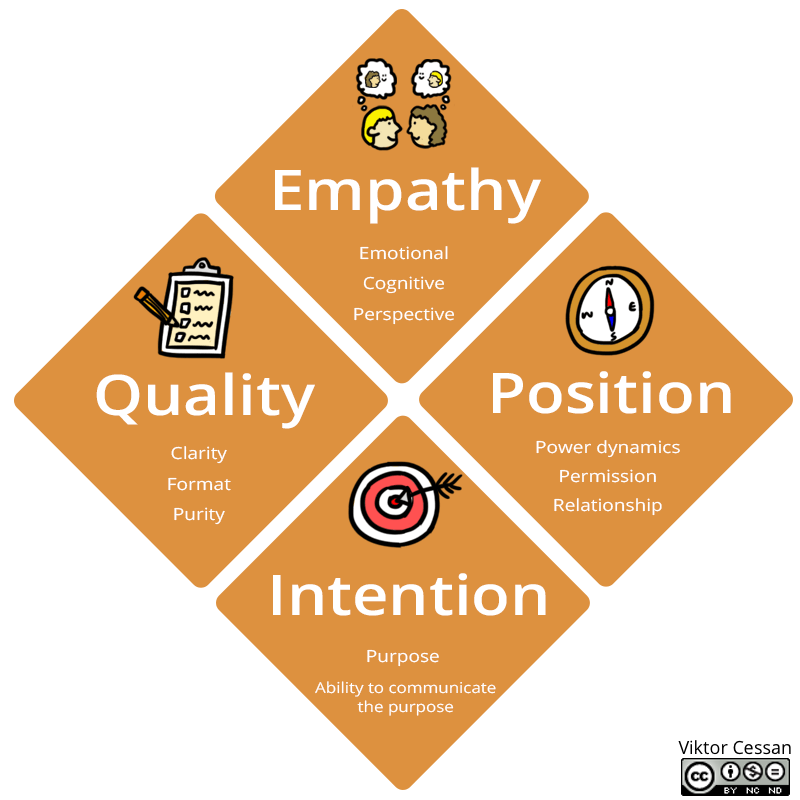
The EPIQ Feedback Model has 4 primary dimensions, each of which I’ll discuss in more detail below. Additionally, the Intentions dimension is broken down into its own separate model which I call The Four Intentions Model and describe below.
Intention
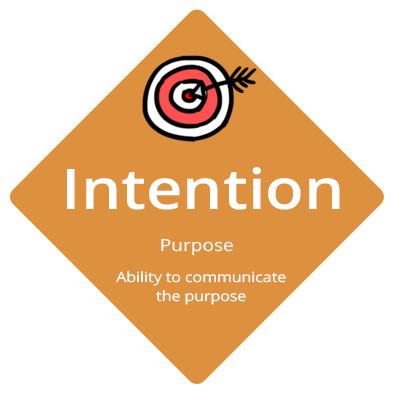
Now, I call it the EPIQ Feedback Model, but we’re starting with Intention. Why is that?
Whenever people ask me for help in giving feedback, the first question I ask is what their Intention is. Discovering and being able to articulate your intention for yourself is the first step to crafting great feedback. If you don’t know what your intention is, you’re probably not ready to offer feedback because whatever you say will likely not be congruent. How can you craft effective feedback if you don’t know what you want to say or why you want to say it?
So why do we give each other feedback then? I’ve found that most feedback has one of four intentions. They are to:
- Improve Performance
- Develop the Relationship
- Raise Self Awareness
- Boost (Confidence, Self-esteem, Inspiration, Motivation)
The Four Intentions Model
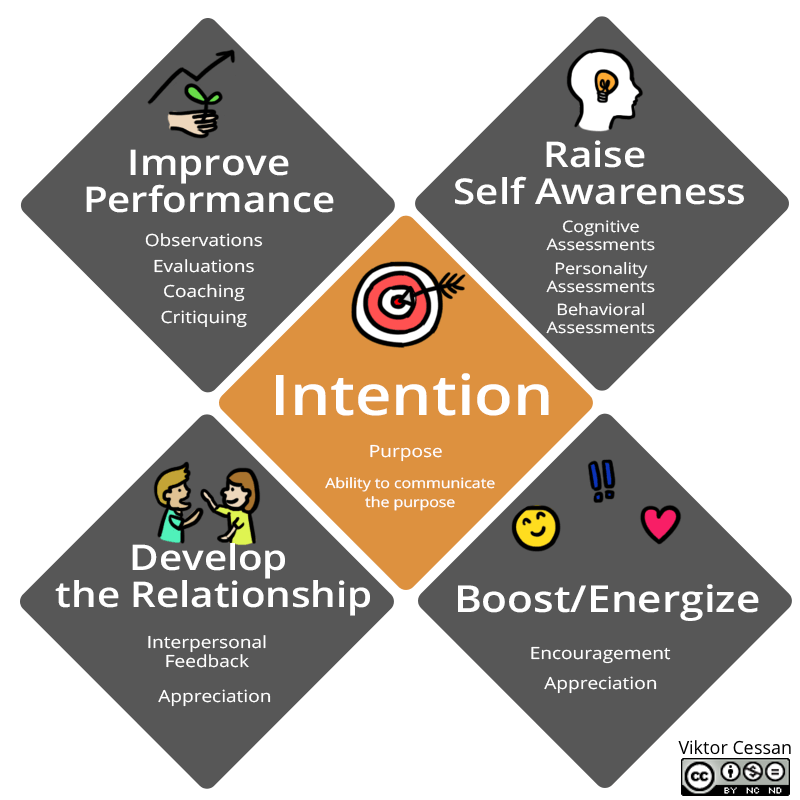
Improving Performance is the intention to help someone master their craft or profession. It has nothing to do with the relationship or helping someone learn about herself. The focus is the other person’s performance and results.
Worth mentioning here is that “Critiquing” without considering all the components of the EPIQ Feedback Model can often turn into criticism which harms performance and the relationship. Truly great feedback gets the message across while keeping the relationship and morale in tact.
Raising Self-Awareness is the intention to help someone learn about their personality and all that comes with it: cognitive abilities, reactions to stress, mental models, thought patterns, emotions, etc. For that reason, I think we need to tread carefully when attempting this kind of feedback. We don’t know what a person may discover about herself and, unless we’re trained therapists, can do a lot of harm.
Developing Relationships is the intention to improve collaboration and the relationship. Here the focus is on how someone’s behavior affected your relationship with that person. Most feedback training I’ve seen and attended is focused on this dimension. You’ll recognize this type of feedback from the format: “When you, I felt, I wish you would…”. It’s certainly an important intention, but not at all times, so don’t try to make everything fit into this format.
Boosting and Energizing people is all about showing appreciation. There’s no hidden agenda or wish for change to happen with this kind of feedback. It’s purely used to show someone that you appreciate them or want to encourage them.
Feedback with this intention sounds something like “Thank you for…” or “I appreciate you for…”. Note: I’ve purposefully chosen the word “encouragement” and not “praise” here. If you’re wondering why, check out Carol Dweck’s research or all the other great research on the topic.
What to do with multiple intentions
Intentions aren’t always so black and white though. And that can make giving effective feedback tricky. Sometimes you can have multiple intentions with the same feedback. For example, someone who wants to delay decision making to gather more data may make you frustrated to a point where you don’t want to work with her, and it may also be hurting her or other people’s performance. But where do you start?
In that case of multiple intentions, pick just one to focus on. Is it more important for you that she understands how she makes you feel or is it more important that she improves her performance?
Related: I’ve written a more detailed post about The Four Intentions Feedback Model along with its own self-assessment quiz to help you discover whether you know the difference between different types of feedback. Click on the link above to explore this aspect more.
Key takeaways from Intentions:
- You need to be aware of your intention.
- Your intention must shape the feedback format.
- You should focus on just one intention with the same point of feedback.
- Your ability to clearly communicate your intentions has a huge impact on the outcome.
Position
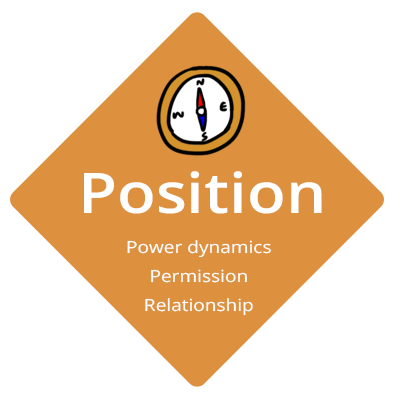
The next piece of the feedback model is called Position. Position consists of Power Dynamics, Permission, and the strength of the Relationship.
It’s not something that we discuss often, and the material out there is quite vague, but Power Dynamics are always at play and especially when giving feedback (and receiving it too for that matter).
Without going into too much detail, because it really warrants it’s own post, our self-esteem and backgrounds predispose us to have the need to feel either superior, inferior, or equal to our peers. The Swedish culture, for example, tends to predispose people to want to feel Equal. You can see this reflected in flatter organizational hierarchies, consensus-driven decision-making tendencies, and in the uncomfortable reaction most Swedish managers have to be called “boss”.
The preference toward superior, inferior, or equal power dynamics differs across cultures and individuals, so it’s important to be aware of the power dynamics that could be at play when formulating your feedback.
Whenever we want to offer someone feedback, we risk challenging the power dynamics, so it’s important to consider how your feedback may affect that dynamic. To read more about Power Dynamics have look at Ed Batistas write up on David Rocks research on neuroleadership and SCARF-model (Status, Certainty, Autonomy, Relatedness, Fairness), or Will Schutz and his FIRO-model.
When feedback does challenge the dynamics the receiver is more likely to go into defensive position, and this brings us to the second part of Position: Permission.
Given how easy it is to shake the power dynamics at play, it’s important to ask for explicit Permission before you offer someone feedback to make sure you get started down the right path towards effective feedback. Asking for permission sets expectations and can create a safe space where the two of you are more comfortable speaking openly.
Asking for permission sounds different depending on our intentions
Depending on the intention you have, you need to ask for permission in different ways. If your feedback centers on helping someone increase their performance, you might ask “I have made an observation that I think will be helpful to you in your <role>, may I share it with you? Or you could ask “May I offer you some advice?”.
If your feedback relates to developing the relationship, however, you might ask something along the lines of “May I offer you feedback about our relationship?”, or, to be even more direct, “May I offer you feedback about how your behavior in our latest meeting affected our relationship?”.
If your feedback is related to boosting someone, you could ask “May I offer you some encouragement or appreciation”.
[Effective feedback takes into consideration the receiver’s openness to new information. Giving feedback that doesn’t make the other person close up or become defensive is essential to doing this.]
The Relationship component of Position is comprised of Expectations and Trust. When the expectations of the feedback giver and receivers do not match, the likelihood of misunderstandings and defensive behaviors increases. If you, for example, Expect your peers to boost you but they continue to give you advice or critique you, eventually you’re bound to clash.
Trust is about considering whether or not you have the necessary trust capital built up to have the conversation you plan to. If you, for example, are about to give someone feedback on their performance and they trust you, it’s likely they’ll want to hear that feedback from you. If they don’t want feedback from you, giving effective feedback will be difficult as the conversation is not going to be constructive.
Quality
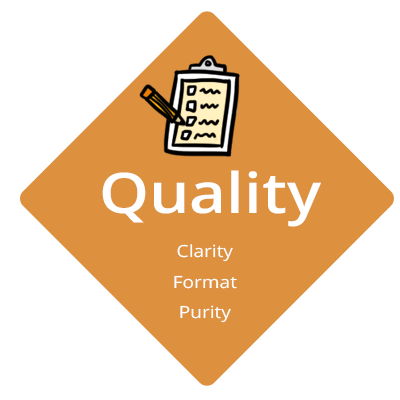
Next up is the feedback model is Quality. Quality can be broken down into Clarity, Format, and Purity.
Clarity comes from making sure the other person fully understands your message and meaning. For some, this comes from giving more context, and for others, it requires making the feedback more concrete and concise. Without clarity, you dilute your message. The meaning of the message can change, and that can leave a bitter taste. Great feedback doesn’t feel like that.
Format is about matching the feedback format to the intentions. What’s most effective will come back to your intention. Is your goal to help someone improve their performance? Try using advice, coaching, or evaluation. Want to improve your relationship with someone? Relationship feedback would be the way to go.
It’s also important to note that “Feedback” has many meanings and that there may be cultural elements at play. A good place to start is whether you have the same view on what feedback is. To proactively counteract potential tensions or misunderstandings, bring along the 4 Intentions Feedback Model to whomever you’re about to offer feedback to and clarify your intentions.

Purity is about your ability to distinguish between data and interpretation. Keeping the two separate is crucial for ensuring that your feedback is real feedback and not something else.
It’s really easy to blur the lines between what actually happens and how we interpret something. For example, if I’m 5 minutes late to a meeting, we can all agree I was 5 minutes late. But do we all place the same meaning on it? Some may perceive me as lazy, a slacker, or disrespectful. Others may think I am overcommitted and unorganized. When these people then find out that I was early for the meeting but the cables in the room didn’t work so I went to fix them, they may see me in a different light. Effective feedback starts with being able to distinguish between what happened and what we’ve interpreted.
The better we are at separating this type of “intake” from the interpretation, the purer and more effective our feedback becomes (something pioneering family therapist Virginia Satir describes in her Virginia Satir Interaction Model).
Key takeaways from Quality:
- Make your feedback as short and to the point as possible without diluting it.
- Match Intention and Format.
- Don’t mix facts and interpretations — make sure your feedback is pure.
Empathy
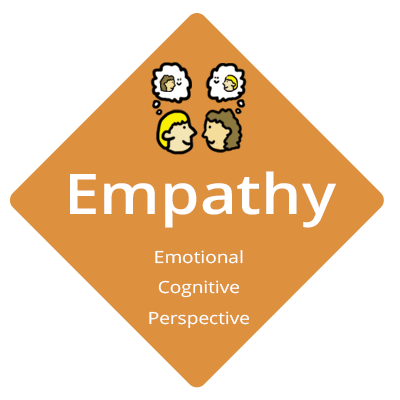
This brings us to the last piece of our feedback model, Empathy. Empathy is central when crafting feedback. To give great feedback, you need to have at least some empathy towards the person you want to offer your truths. There are three types of empathy to be aware of Emotional, Cognitive, and Perspective (also called Somatic).
Imagine meeting a friend who’s just interviewed for her dream job. She smiling and jittery and tells you that the interview went really well.
When you feel that same feeling of jitters and happiness, that’s Emotional Empathy. You’re relating to someone’s feelings, or sharing their feelings–putting yourself in their shoes so to speak.
Cognitive Empathy is understanding how the other person is reasoning and thinking about a situation, the thought models that are in use: “Oh, she’s interviewed for her dream job, they said they’d call back, they asked for her references, that’s why she’s excited and jittery.” is what you might understand if you apply cognitive empathy.
Perspective Empathy is about understanding that the excitement and jitter belong to your friend, not you. Even if you can relate to and experience her feelings, she is the one feeling them about her situation.
Empathy shifts rhetoric and makes our feedback more caring. This goes a long way to making sure our feedback sits well with the receiver.
Before you offer someone feedback, it’s important to self-assess whether or not you have thought things through from an empathy standpoint. When you don’t access your empathy towards a person, it increases the chances that you design feedback that will be perceived as blunt or disrespectful. This can make the conversation feel unsafe for the receiver, who will go into defensive mode, and prevent you from delivering (effective) feedback.
Being aware of the three levels is very important too. If you have easy access to emotional empathy but you’re unable to distinguish between your feelings and the other person’s feelings, their reality may become yours. This may lead you to avoid offering feedback. Not being able to distinguish between feelings may also lead to the feedback not being about the other person and, instead, just about you.
Take for example a situation in which someone shares something difficult going on in her life. If you can’t distinguish between your feelings, you may avoid her because “she’s so negative”. If you stop and realize that it’s actually you who has a hard time with sorrow or disappointment, you see that she’s in fact not. Be aware of which type of empathy you have for the other person, and you’ll be on your way to designing and delivering great feedback.
Key takeaways for Empathy:
- Make sure you have tried to empathize before you offer someone feedback.
- Having empathy for someone doesn’t invalidate your experience.
- There are different types of empathy and it’s good to be aware of which one you more easily can access.
Putting the EPIQ Feedback Model to use
If by now you’re thinking, “Wow, there’s a lot to feedback” or “Mastering the art of giving feedback is going to be tough”, that’s a good thing. It’s important to recognize that becoming, and staying, good at giving effective feedback takes time and effort. But it’s not outside your reach.
The EPIQ Feedback Model can be helpful to you on your journey towards getting better at crafting great feedback in several ways. Here’s how you can put it to use:
Improve feedback in your team
- Conduct a retrospective with your team. Look at the feedback model together and explore the different dimensions e.g. how you ask each other for permission. Or evaluate what types of feedback you offer each other, and what types you don’t.
- Create explicit agreements about what type of feedback you want to offer each other more of and which ones, if any, you want to do less of.
- Create explicit agreements about how to ask for permission. Or create ceremonies e.g. every Friday we boost each other.
Get better at offering and receiving feedback personally
- Think about what type of feedback you feel comfortable with and which ones you avoid. Why is that?
- Talk with your peers, manager, or directs about which types of feedback they expect from you.
- When offering feedback to someone, bring the model along and point to the area in the feedback model that corresponds to the feedback you’re going to offer to properly set expectations.
- After offering feedback, go through the feedback model together and reflect upon how the conversation was from the perspective of the different dimensions.
Set your company’s feedback culture
- Together with HR and managers reflect on how your employees offer each other feedback, also explore which intentions are more and less common.
- Reflect upon which dimensions of the feedback model your managers and their directs are doing well and where they need support.
- Meet with managers and decide what your feedback strategy should be i.e. what do we expect team members to give to each other, what should be handled between peers, etc.
- Connected with the previous point, talk about what trainings you have and review whether they cover the dimensions that your organization needs to improve on.
Start giving EPIQ Feedback with my free workbook
I’ve put together a short, free workbook to will help you prepare better feedback. Sign-up to my newsletter below to download your own copy of it.
If you’d like to learn more about the EPIQ Feedback Model, feedback in general, or if you have feedback for me about this post :) — please reach out to me!
Thanks for reading!
P.s I did a introductory talk about this (in Swedish) at Agila Sverige 2018 but I go into the subject more in detail in this article.
9 Comments
Mattias Larsson
Hey Victor!
Love your post – brilliant as usual!
Feedback is truly a topic I’ve been struggling with for quite a while. It seems it’s just really tricky to “get right” in an organisation, no matter how you try. At least in Sweden. I’m starting to doubt if people really (I mean REALLY) want feedback, or a “feedback culture”? Lots of folks might just think it’s a bit too personal and difficult and possibly awkward… (note: my thoughts).
Love to speak more about your findings.
Anyway – one question:
Have you ever heard of anyone being turned down when asking for permission to give someone feedback. I feel it’s seen as against protocol to say “no, I don’t want feedback”. Just because it’s supposed to be such a good thing. (And maybe that’s the link between what I wrote above and this.)
Hugs,
Mattias
Viktor Cessan
Hi Mattias,
Thanks for the encouragement!
Yes, it’s tabu to dismiss offers of feedback (not even being willing to listen) and with not being open to feedback particularly in any radically egalitarian society. But there’s a chapter in the book “Thanks for the feedback” where the authors explore when it’s fine to dismiss feedback and there are such occasions.
I have not heard about anyone dismissing feedback offers altogether but I have heard about people delaying it and I have a recent personal example of where I requested that the feedback conversation happens later. I was in a meeting when a co-worker approached me and let me know she has feedback for me and started giving it to me. I had to interrupt her to let her know that I was in a meeting with someone else, because we were sitting in a social area, and say that I’d love to hear it but at a later time, after my meeting. And I asked her what a good time would be for her.
Have you had anyone dismiss your offer for feedback?
Pingback:
Carsten Laaber
Hi Viktor –
I have had an interesting observation with feedback recently. Observation was: it was used to limit the influence a person has by making that person feel inadequate and threatened. Phrases like: I heard this and that and people are wondering about what you do day to day.
I’m my opinion, feedback in this case was used to demoralize that person as it was never constructive nor empathetic.
Have you had similar experiences with feedback being used that way? In that case, I could understand that people are no longer willing to receive feedback, but shut down.
Carsten
Viktor Cessan
I’ve seen this happen yes, it’s happened to me, and I’ve heard people tell me it’s happened to them. Sometimes it is just a missunderstanding – the person offering feedback did not prepare well enough and perhaps did not understand their own intention, or they did not consider position, lacked access to empathy, or was not able to distinguish between event and interpretation.
And when people claim to be your friend and have your best interest at heart saying “I just wanted to let you know something other people are saying behind your back” that may really be the case. But it may also be that the person is uncomfortable when everyone isn’t a best friends at work, they may want to assert themselves, they may identify as a mediator, or they may just not understand what’s expected of them in a situation like this. So the reasons can be really many but and it is possible to shift such a conversation to a rewarding one, for example “how did hearing this about me affect you and our relationship?”. But it requires a very grounded and congruent receiver to achieve and often that is not even enough.
And when someone coming from a higher status than you, whether that’s expertise, relational, or positional, pushes this non feedback at you (because that’s what it really is) it puts the receiver in a very difficult position.
How did you deal with it?
Anonymous
Easy to check out, readable…heck I needed to leave a commment!
Conrad Giller
Hi, Victor,
thanx for this very easy to use and helpful tool.
There is one question left over, concerning Quality-question #4: What format best fits your intention?
Why Do you ask for best fitting the intention and not the situation?
To my understanding the questions 1-3 should bring me to the insight, that my first interpretation of the situation might not be the best.
So I can switch to a better interpretation of what really happens and not to what best meets my intention.
I guess this tool mostly helps people to clarify and maybe even change their intentions.
Thanx, CG:)
Viktor Cessan
Hi Conrad,
“Situation” can mean a lot of things such as the relationship, the expectations, or just what exactly happened. Since I don’t know what situation means to you it is a little bit hard to answer but I’ll share my thoughts and there are two reasons.
Reason 1 – Placing focus on the situation reduces the significance of your needs or the other persons needs.
I noticed that many who plan to give feedback are aware of how that something happened (from their pov) and what other people did. And they want the other people involved to know. But they aren’t aware of their own intentions and this is an incongruent place to be in. When someone is aware of a situation more of their own intention, the conversation is more likely to go into blame, placating, or a super reasonable coping stance where peoples needs are considered irrelevant (read more about them here https://docs.google.com/presentation/d/1UP9qEiyFklpqPfoH31Pt3rqxD3scolmuUgaNM5Fgzis/)
Reason 2 – We can never be fully aware of a situation, only from our own pov.
By shifting focus to intentions instead of situation we’re also highlighting that you are giving someone feedback for your own sake, which feedback is–information that you believe is valuable to share.
I hope this was helpful, feel free to send me an email otherwise :)
Pingback: